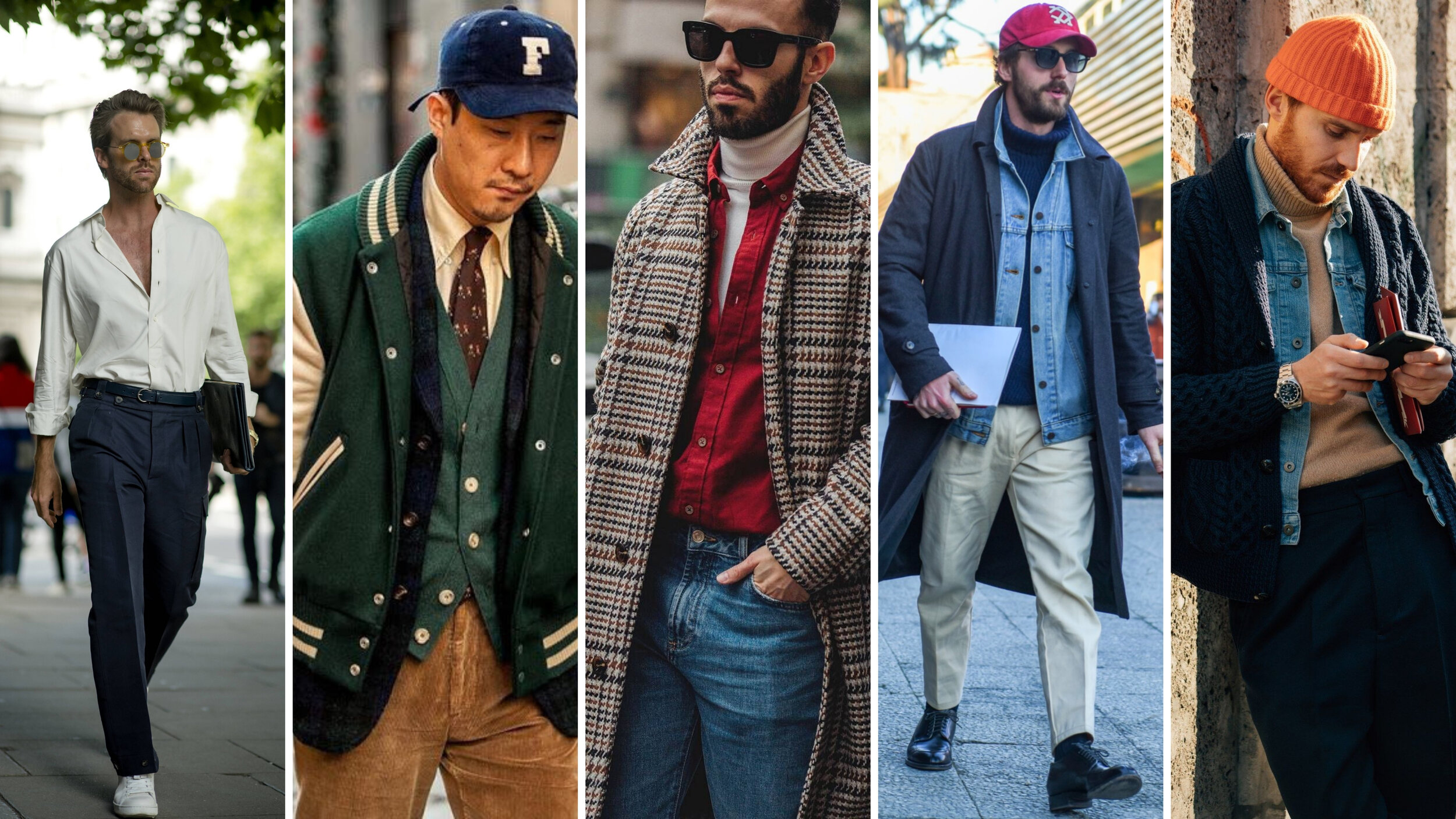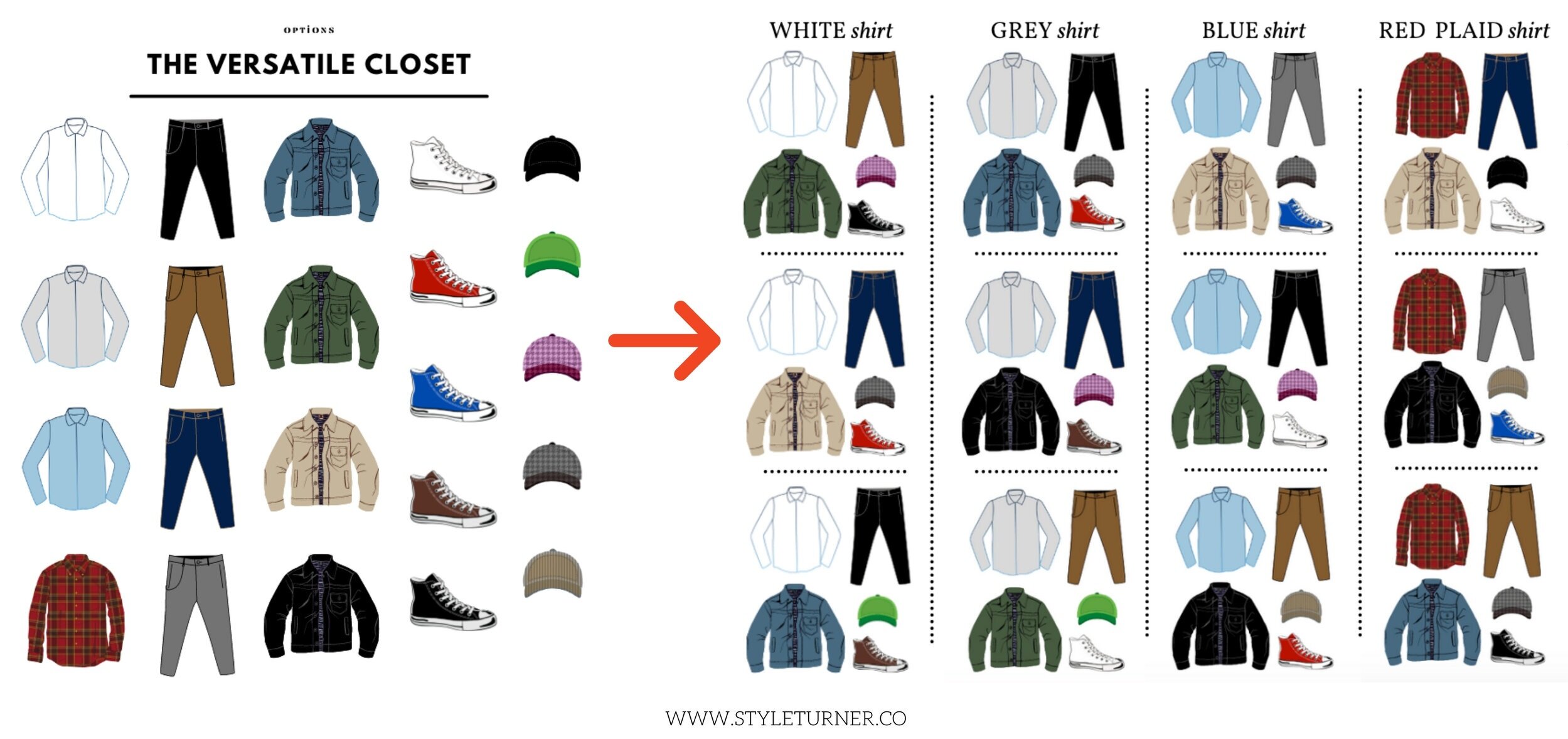Why Your Outfits Suck: Brilliant Tips for Mastering Color for Men
Via Pinterest
Color is subjective, complex, and deeply personal, making it difficult to understand—much less explain.
Despite being one of the most critical and divisive topics in fashion, it’s widely considered confusing, especially for men. Our ingrained convictions coupled with society’s obsession with gendered color specification, it’s clear why men have such a difficult time identifying and incorporating the right colors into their wardrobes.
As a personal stylist for men, I witness this uncertainty firsthand. When I begin initial talks with a new client, most fall into one of two categories: those who love color—or at least say they do—and those who have rigid, unwavering boundaries around the topic. Attempting to navigate either type can be a challenge. To break down this disillusionment, men must first understand the nuances of color and realize it’s more straightforward than they might think.
If you find yourself continually frustrated because your outfits suck, it’s time to understand what you’re doing wrong and course-correct with the help of a handy little formula developed to make creating great outfits the easiest part of your day.
Why the Right Color Combinations Matter
Since I’ve already established how complicated color can be, I’ll avoid diving too deep into color theory as it’s an entire world unto itself. And, let’s face it, nobody has time for that when you’re just trying to look good…moving on.
I’ve worked with many guys who have convinced themselves that they have zero understanding of how to combine colors. I challenge this notion by asking them to name a few celebrities, colleagues, or even family members whose style they admire. Most are quick to name a handful of male actors whose style they love. When asked to elaborate on why love said actors’ style, they’re typically able to articulate the aesthetic characteristics that make their sartorial man-crush standout. “See!” I tell them. It’s clear that they have an eye for what looks good; it’s just a matter of translating this inherent taste level onto themselves.
Combining colors to create compelling outfits is easier than you think. It’s a matter of understanding the basics of what your eyes deem aesthetically pleasing.
Whether or not we know it, we’re all subconsciously passing judgment—good or bad—based solely on color. According to the Institute of Color Research, color plays a significant role in how we perceive others. Roughly 60% of our subconscious impression of a person is contingent on color. To add insult to injury, this snap judgment takes less than 90 seconds to establish and includes important characteristics like trustworthiness and credibility— attributes directly related to visual presentation.
This fact shows why color and how we manipulate it to our advantage is so important.
The Importance of Contrast
It’s not uncommon for men to hold onto archaic belief systems when it comes to dressing. At one time or another, as children, we were taught that “matching” was the key to great style. Your shirt should match your pants, pants should match your socks, and socks should match your shoes. The lengths to which many parents went to ensure their child looked like a perfectly coordinated cartoon character was equal parts sweet and bizarre. Matchy-matchy may have been an easy way to assemble an outfit 30 years ago, but that look no longer has its place in the modern man’s closet.
Contrast is paramount to an outfit going from dull and bland to dynamic and exciting. Reimagine this in the context of food. If faced with choosing between 2 different meals, would you go for the dish containing a singular component or the dish full of varying flavors and textures? Even if the first option is tasty, it’s hard to fully appreciate its taste if there’s nothing else on the plate to compare it. The same goes for your outfit.
Via Style Turner
Whether we’re conscious or not of the meaning behind our style decisions, we are all trying to convey something with our visual presence. Contrast is significant when it comes to style because the purpose of these decisions can only be conveyed if relative to something else.
This concept sounds intimidating—I get it. Lucky for you, I’ve developed a flexible, dummy-proof formula for creating amazing outfits without so much as breaking a sweat.
The Color Hierarchy You Never Knew You Needed
Before diving into the formula, you first need to understand the three color components necessary to mix and match to your heart’s content.
The Color Hierarchy via Style Turner
Each tier represents a portion of an outfit. A series of colors represent each tier. Muted neutrals represent the bottom tier or Base Colors (the most considerable portion of the hierarchy). Saturated neutrals in varying tones, textures, and patterns represent the middle tier or Secondary Colors. Lastly, bold seasonal colors represent the top tier or the Accent Colors.
Via Style Turner
The hierarchy’s primary color palette represents a no muss, no fuss wardrobe: 50% muted neutrals; 40% saturated, tonal neutrals—in varying textures & patterns; and 10% bold color for the much needed “pop” of color. Not too complicated, right?
This color system can and should be put into practice when assembling an outfit and a wardrobe.
If you take nothing from this article, I hope you take this one thing to heart, and that is: neutral colors are the most critical colors in any wardrobe. Think of neutrals as a home’s foundation. Without a solid foundation, everything constructed on top will appear shaky, uneven, and shabby. Though everything may temporarily look fine, it’s only a matter of time before everything topples to the ground. Without a strong foundation, the house lacks structure and longevity. In short, it’s temporary. The same goes for your wardrobe. It’s tempting to want to surpass the neutrals in favor of bolder, more visually exciting colors. Although this type of wardrobe is initially rousing, it quickly looks garish, dated, and downright tacky. We all know that guy. Don’t be that guy.
The Magic Formula for Phenomenal Outfits
Imagine understanding how to quickly assemble any outfit for any occasion with a simple formula. Imagine knowing how to give every one of your outfits that extra bit of panache to make it genuinely look (and feel) amazing. Enticed? Curious? Read on.
I’ll be the first to admit that this type of formula isn’t exactly novel. There are countless blogs with similar recipes for building effortless outfits. The goal for my iteration is to demystify the art of dressing well. Since most of my clients are analytically-driven men with little time to devote to the planning of outfits, I needed to streamline this process into a systematic procedure. By quantifying the relationship of each clothing component, it simplifies this obligatory daily task. Who doesn’t want that? I’ll wait...
So how does it work? Let me show you.
Via Style Turner
Step 1: Base Colors (~50% of Total Outfit)
Starting from the bottom of the pyramid and working our way up, select your core, neutral pieces. As a general rule, choose pieces that take up the most visual space when worn. I suggest starting with your shirt or pants—or both depending on the number of layers your outfit will be comprised of—as these two pieces come in a wide variety of neutral colors in basically any brand at any price point. Remember, the pieces selected in this first step should make up 50% of your entire outfit.
Step 2: Secondary Colors (~40% of Total Outfit)
Next, decide which piece(s) will serve as your Secondary Colors. The number of elements in your outfit will determine how many pieces to select. For outfits containing four pieces, choose one dominant piece—such as a jacket—for this second-tier color. For outfits containing five pieces, choose one presiding piece plus one accessory. Don’t overthink this; focus on the fact that this color tier should be roughly 40% of your outfit. When in doubt, step back, squint your eyes and see if you need to add or edit. This ability will become easier with practice.
Step 3: Accent Colors (~10% of Total Outfit)
For the final step, you’ll need to decide on an accent color(s). Although this item accounts for the smallest portion of the outfit, it’s the component that can turn an average look into something 100X cooler. Focus on contrast: which color will simultaneously subvert and unite? Now’s your time to play, experiment, and showcase some personality.
Via Style Turner
THIS FORMULA IS NOT SET IN STONE.
I repeat, THIS FORMULA IS NOT SET IN STONE.
Please, I beg, don’t spiral into analysis paralysis. After all, the formula’s sole purpose is to simplify, not incite confusion. If your look doesn’t perfectly adhere to the 50%+40%+10% ratios, don’t sweat it. It’s is a general guide, a suggestion. Don’t obsess over making it perfect. So long as your outfit comprises neutrals predominantly with a dash of pattern and a final sprinkling of bold color, you’re far ahead of 95% of men.
To Sum it Up:
1. Color combinations matter. Your visual presence makes up more than half of someone’s perception of who you are. Make your first impression your best impression by harnessing the power of color to showcase your value before you even open your mouth.
2. Contrast is essential for good design. Within every facet of design, contrast serves as the omnipresent backbone. This notion is valid in all forms of art—food, sex, and of course, fashion. Avoid looking like a big, tonal blob by keeping contrast at the forefront of your mind when constructing daily outfits.
3. Systematic procedures work. Diving headfirst into any uncharted territory—especially one relating to style—can be an overwhelming expedition. By removing the often intimidating ~fashion~ milieu and recontextualizing your daily dressing ritual into a quantitative challenge, you’ll slowly but surely begin rewiring your brain to understand the nuances of color choice intuitively.
4. Rules are meant to be broken. I’m not fond of rules. Especially baseless style rules built to shame and confuse. Do I feel that this formula works? Absolutely. Do I, myself, always follow the formula to a tee? Absolutely not. Personal style is a practice in self-exploration. What works for some may not work for others, and that’s okay. Take every tip and trick with a grain of salt. Personal style isn’t about dressing well; it’s about harnessing the power of perception to communicate who you are to the outside world authentically. It’s a communication tool, one you have complete and total control over.






